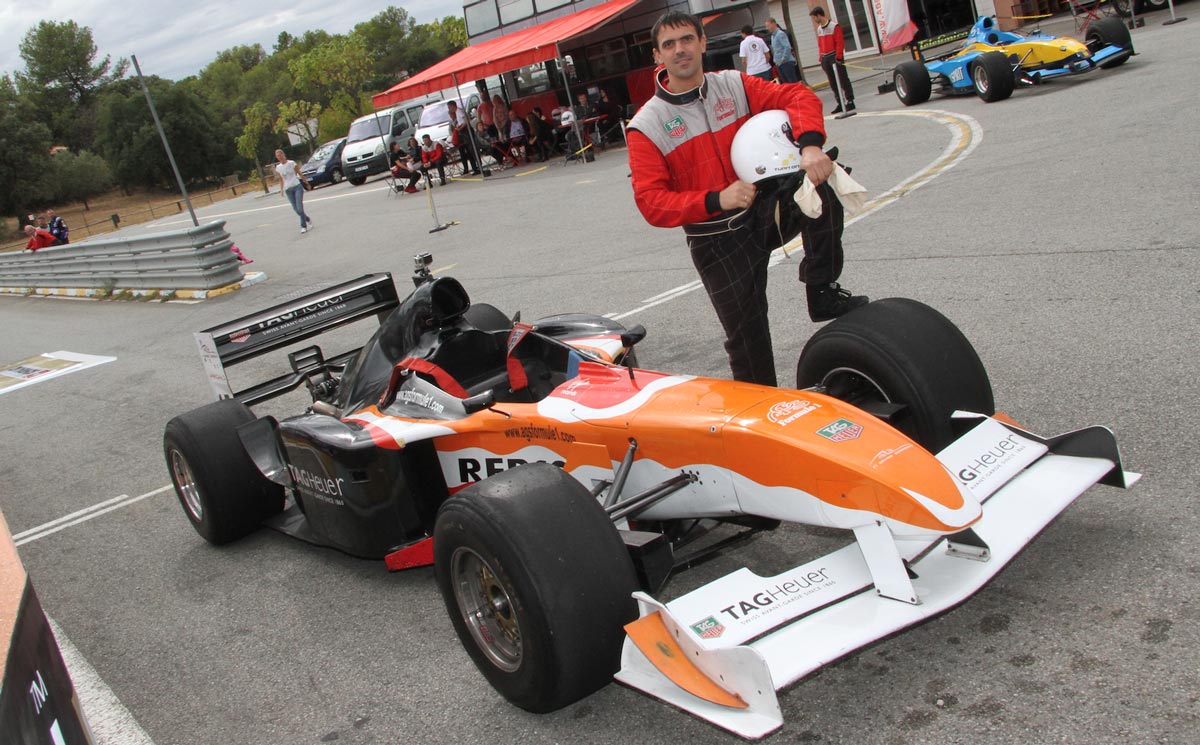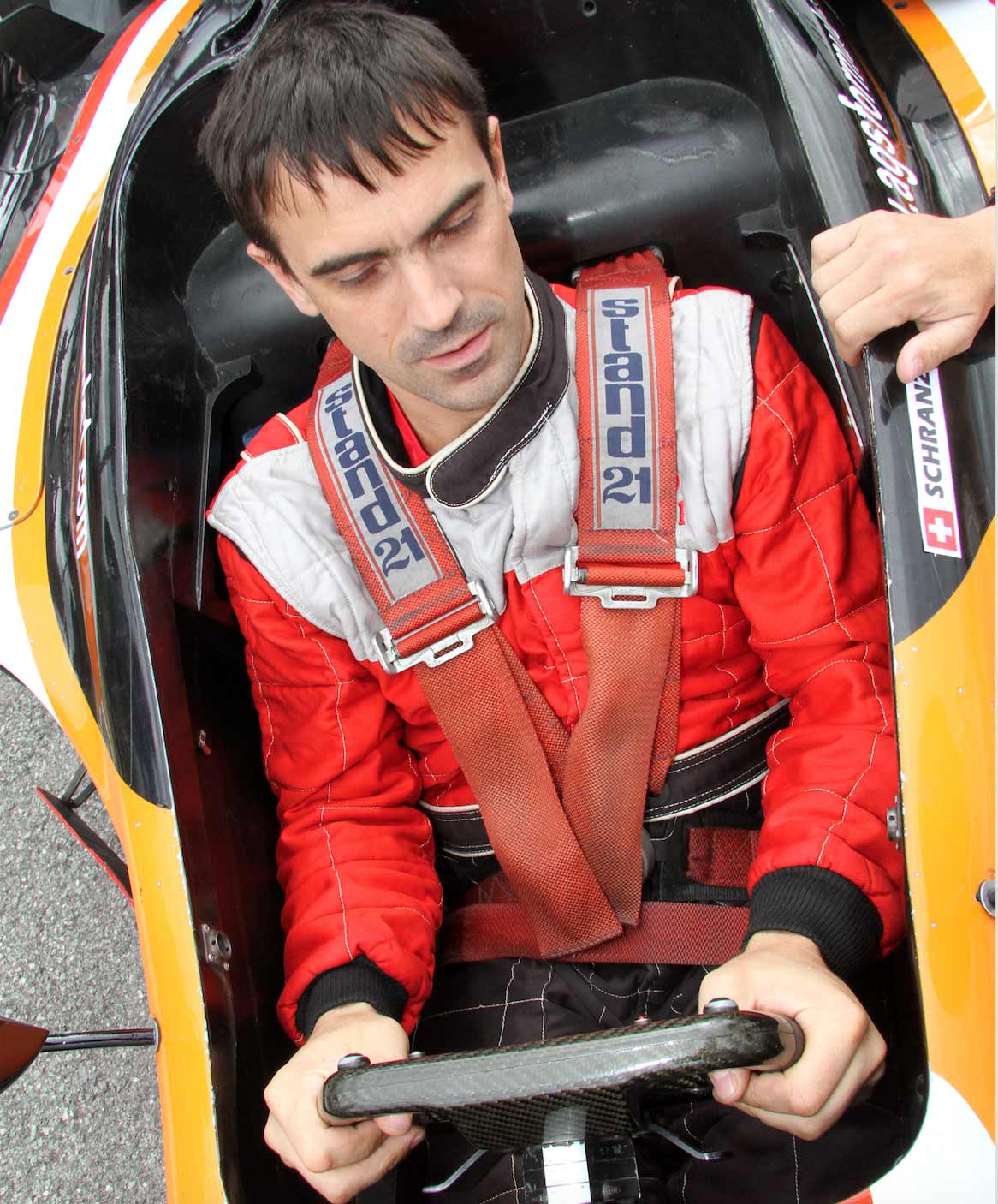Formel 1 in the South of France as a Hobby-driver

Since I was a young boy, I dreamed about sitting in a Formula One (F1) car. I followed every broadcast, stared at the screen, and was transfixed by both the passing maneuvers and the breathtaking speed with which the cars went along the straights. When I was given the possibility of sitting in an F1 car in Le Luc in the South of France, I immediately knew that I had to take advantage of the opportunity as soon as possible.
The Racetrack in the South of France
The first bit of research I did before arriving was locating the track in Le Luc since, at that time, I mostly associated the South of France with classy resorts, wonderful beaches, and good food (a racetrack certainly didn’t come to mind). I was surprised to learn that Le Luc was only about 100 kilometers from Nice. After flying there, it was possible to book a helicopter for pickup right at the airport to get to the hotel, as well as another helicopter to return to the airport after spending time at the racetrack.
A few tidbits about the track:
- F1 pilot Maurice Trintignant founded the track in 1965.
- It’s 2.2 kilometers long and 9 meters wide.
- In 1989, it was completely renewed with special asphalt.
I found that data to be very interesting and impressive. What I didn’t know yet, though, was that a former F1 pilot lived close by and had pushed for the building of this track.
Off to the Racetrack
- The day of our adventure started very early when we were picked up at 6 in the morning at our hotel. Amongst the participants was World Cup skier and Olympic Gold Medalist Dominique Gisin, with who I was honored to speak to. I thought to myself that she surely wouldn’t be too scared of the speed we were about to experience.
In reality, though, I had no idea what the other participants felt like. At any rate, I was extremely excited since I had been dreaming about driving an F1 car around a spectacular racetrack for decades.
If you have never driven a racing car before, you will soon understand (after my explanation) that a racing car is an entirely different beast than your regular car. The
enormous power of an F1 car must not be underestimated since one bad move, including breaking too early, could mean that you will end up in a car crash.
Two of the participants that day made that exact mistake. There is a firm and fast rule on the racetrack – if you wipe out and crash into the gravel pit, your turn is immediately over, and you will be put in the spectator stands. Therefore, it is in your own interest to be cautious when pressing down on the gas pedal.
Morning: Formel Renault
After the technical and strategical introductions, we were finally able to get in the racing cars. During the morning hours, it was all about Formel Renault. The cars used for Formel Renault are easier to operate than those in the premier class. To start, we were allowed to do two sets of eight laps around the racetrack.
When I first pressed down on the gas pedal, I was overwhelmed by the enormous power of the car. The cars are surprisingly good in corners, but I was having trouble speeding up when necessary and simply rolled along at first. It took me quite a bit of time to gather the courage to brake late enough so that I would have enough pressure keeping me in the corner. The cockpit was tight, the overwhelming noise took some getting used to and I was right up there with the screeching motor, just two centimeters above the ground. Eventually though, after I had done my second set of eight laps, I started to feel much more secure in the car.
Afternoon:The Premier Class

After a tasty dinner, during which all participants excitedly chatted about their experience in the Formel Renault cars, we headed out to the F1 cars. Before we could drive them, we were given another briefing. F1 is the premier class for a reason, and upon driving them, we quickly realized how much hard work the professionals were putting in during each race and each training session.
The first participant in our group wiped out in the third corner and sadly had to remain in the spectator stands for the rest of the day. When I realized what problems the other participants were having (even though they didn’t have much of a problem with the Formel Renault cars), I became a lot more nervous and tense.

The most difficult part of driving an F1 car is operating the clutch, even for professional drivers. Often, they will sporadically stall their engines. Beginners, however, will go through a clutch after just a couple of starts. We let it slip for such a long time that the noise began
hurting our ears. However, this was the only way for us to start up the car at all. When I lightly touched the accelerator, the motor screeched into life.
The volume was much louder than a Formula 3000 car. I set off on the first straight, still driving relatively carefully. With each lap I completed, I gathered up more courage and began to fully use the accelerator, instead of just lightly pressing it. The speed was breathtaking and after five laps, I was under the impression that I had become somewhat close to the maximum performance of the car.
I would find out during an accompanied drive along the racetrack that my previous supposition was dead wrong. While I sat at the back of the race car, a professional driver went around the racetrack at about 250 kilometers an hour. We only did two laps on the racetrack, most likely because it was extremely hard to breathe the moment he hit the gas. Any amount of time longer would have been unbearable. For comparison, it took me around 1 minute and 20 seconds to complete a lap on the racetrack. The lap with the professional was around 30 seconds less.
At certain spots, I thought I was breaking hard, until later when I found out that I had only exerted a fraction of the up to 150 kilograms of pressure a professional driver will employ. The driver would often kick it up another gear and use the brakes late enough that I was afraid of ending up as a decorative splatter on the wall at the edge of the racetrack. It is unbelievable the speed with which such a car can drive around a corner. On the TV, it all seems so calm and smooth. As I found out for myself though, that is a complete misunderstanding.
It almost seems superhuman to me what F1 pilots can pull off. I was overwhelmed with just being a co-driver when we were driving our laps on the track alone. During a proper race, there would be a further 30 cars on the circuit.
From 0 to 200 kilometers an hour in under five seconds, then down from 250 to 50 in less than 50 meters, while going into tight curves and driving on a track that can narrow suddenly… I can honestly say that although I have had many extreme adventures, no experience could compare to driving in an F1 car. This experience was incredibly intense, and I’m excited to drive more one day!
